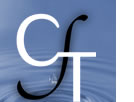 |
||||||||||
Gathering Feedback from Students
The feedback students provide about your teaching on their end-of-semester course evaluations can be valuable in helping you improve and refine your teaching. Soliciting mid-semester student feedback has the additional benefit of allowing you to hear your students' concerns while there is still time in the semester to make appropriate changes. In her book Tools for Teaching, Barbara Gross Davis offers a variety strategies for gathering feedback from students in a chapter called Fast Feedback.
In-Class Feedback Forms
Introduction
One way of gathering feedback from your students is to take 15 minutes or so during class to have them anonymously complete a mid-semester feedback form. A feedback form can contain a mix of free-response and quantitative (also called Likert scale) questions. You can write your own questions or use questions you find on the sample forms available below.
Method
The following sample forms are available as PDF documents (for printing and copying as is) and as Word documents (for modifying or customizing).
The following sample forms are available from the McGraw Center at Princeton University. See also their list of additional questions.
Pros and Cons
In-class feedback forms have the advantage of a high response rate (as high, that is, as your typical attendance rate). One downside is that you might recognize your students' handwriting and so their answers might not be as honest as they could be.
Online Surveys
Introduction
Another way to gather feedback from your students is to have them complete an anonymous, online survey about the course. The kinds of questions you can ask on such a survey are the same ones you would ask on an in-class feedback form, so please see the above sample forms for ideas.
Method
At Vanderbilt, the OAK (Online Access to Knowledge) course management system (powered by Blackboard) can facilitate an anonymous, online survey. Instructions for surveying your students via OAK are available from the University of Oregon's Teaching Effectiveness Program.
Pros and Cons
Since students type, rather than write by hand, their responses, online surveys can do a better job of preserving your students' anonymity and thus increase their ability to be honest in their responses. However, online surveys often have lower response rates than in-class surveys, unless you provide your students with some incentive to respond. (Blackboard can tell you which students have completed your survey without letting you know individual student responses.)
Other Online Surveys
Student Assessment of Learning Gains (SALG)
The SALG instrument is designed for instructors of all disciplines who would like feedback from their students about how the course elements are helping their students to learn. It is offered as a service to the college-level teaching community. Once you've registered (which is free), you can do the following both quickly and easily:
- Modify the SALG instrument so that it fits your own course design
- Enable your students to complete this instrument on-line
- Review and download a statistical analysis of the students' responses
Small Group Analysis (SGA)
The Small Group Analysis (SGA) is a method of gathering anonymous feedback from students about what is helping them learn and what is not, in a course. This service is provided by the Center for Teaching, and is an excellent way to assess students' response to your teaching mid-semester. It goes beyond the methods described above by involving a CFT consultant to help clarify and decipher the sometimes mysterious comments students make on written course evaluations.
Please see our Small Group Analysis page for more information on this service.
HOME | ABOUT CFT | PROGRAMS | SERVICES | RESOURCES
Center for Teaching |
General Questions? Web Site Questions? Copyright ©2009 |
